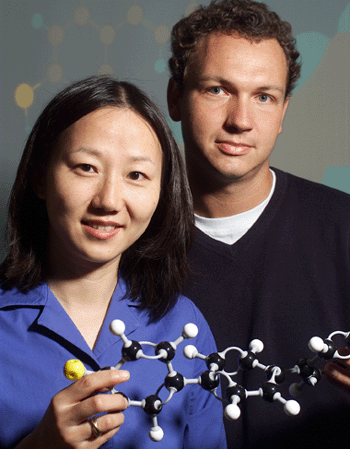NB: One of the publications on which this article is based (J Schön et al 2001 Science 294 2138) has been retracted by its authors. The retraction followed an investigation into scientific misconduct by J Hendrik Schön.
Further information can be found at http://physicsweb.org/article/news/6/9/15.
The other publication on which this article is based (Yu Huang et al 2001 Science 294 1313) is not related in any way to the paper by Schön et al or the investigation into misconduct.
Nanoscale electronics is moving out of the realm of science fiction with breakthroughs being reported almost every week. Hendrik Schön and colleagues at Bell Labs in the US have recently shown that single molecules can act as transistors, while Charles Leiber’s group at Harvard University, also in the US, has made simple logic circuits from nanowires. These achievements come hot on the heels of the recent fabrication of logic circuits from carbon nanotubes.

Schön and colleagues based their experiment on an insulating compound that contained just a few conducting molecules (J Schön et al 2001 Science 294 2138). They deposited a one-molecule-thick layer of this compound onto a silicon substrate, which acts as a gate electrode. The layer then ‘self-assembled’ on the surface – that is, the conducting molecules distributed themselves evenly among the more numerous insulating molecules. Gold source and drain electrodes were then added to each end of the organic layer.
Schön’s group measured the conductance of the layer at a variety of gate voltages, and showed that the layer behaved as a field-effect transistor. This means that the researchers could control its conductance by changing the gate voltage. But most importantly, the team found that, at low temperatures, the conductance was quantized in units related to electric charge. This suggests that individual conducting molecules are producing the conductance – which means that each molecule must behave as a field-effect transistor.
Schön and colleagues admit that further studies are needed to establish exactly how their device works, but believe that it is an important step towards molecular electronics.
Meanwhile, Leiber and colleagues used another so-called bottom-up technique to create logic circuits, including OR, AND and NOT gates (Yu Huang et al 2001 Science 294 1313). ‘Top down’ methods of miniaturization – such as etching and lithography – depend on carving ever-smaller structures from bulk material. These techniques will soon reach their limit, but Leiber’s group instead fabricated transistors from nanowires grown in solution.
The germanium and silicon wires – which are just tens of nanometres in diameter – are crossed and heated to create an insulating layer between them. These structures behave as transistors when electrodes are added, and Leiber and co-workers combined them to make logic circuits. Leiber’s team believes that this bottom-up approach could one day lead to chips that contain a million million devices per square centimetre.



